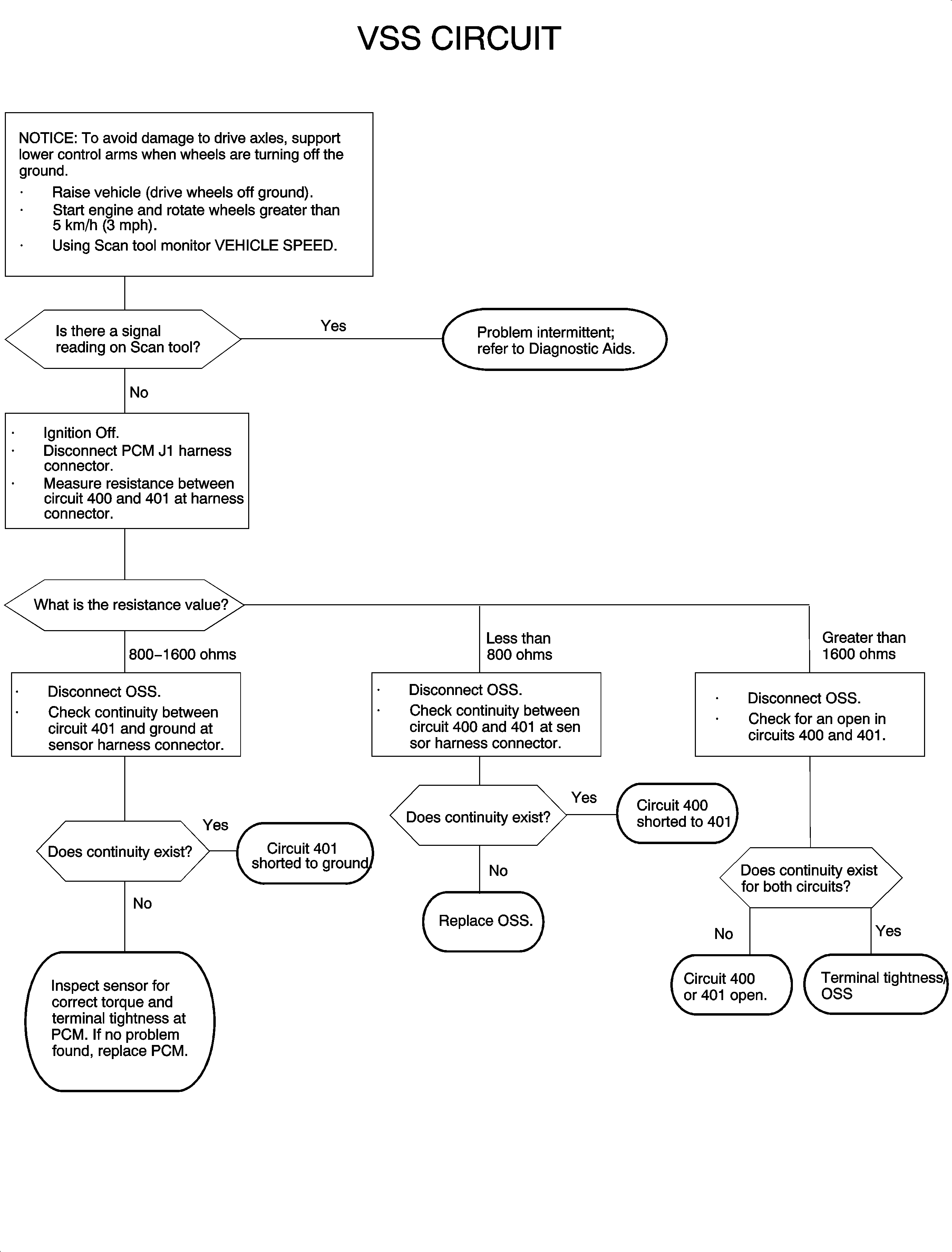The output speed sensor (OSS) produces an AC voltage of different amplitude and frequency depending on the velocity of the output shaft. The OSS produces the signal from 16 evenly spaced machined notches on the transaxle differential carrier. The OSS produces a readable AC voltage signal when vehicle speed is above 5 km/h (3 mph). This OSS signal is sent to the powertrain control module (PCM), which is used to determine the velocity of the output shaft. DTC P0500 sets when the PCM does not detect an OSS signal for a certain length of time.
DTC Parameters
DTC P0500 will set if no OSS signal is less than 5 km/h (3 mph) when:
| • | The condition exists for longer than 6.2 seconds. |
| • | The condition exists twice in one ignition cycle. |
| • | The engine speed is greater than 1,500 RPM. |
| • | The manifold absolute pressure (MAP) is greater than 23 kPa (0.5 volts). |
| • | The transaxle is not in PARK or NEUTRAL (automatic transaxle only). |
| • | DTC P0107 or P0108 is not set. |
DTC P0500 diagnostic runs continuously once the above conditions have been met.
DTC P0500 is a type A DTC.
Diagnostic Aids
Important: On automatic transaxles, DTC P0500 will set when P0721 or P0722 sets.
To locate an intermittent problem, use a scan tool to monitor VEHICLE SPEED with vehicle raised and drive wheels moving greater than 5 km/h (3 mph). Wiggling the wires while watching for dropout in VEHICLE SPEED may locate the area where an open anywhere in the circuit or short to voltage/short to ground in circuit 401 could lie.
Check connection and sensor for tightness.
If no OSS signal is received, the speedometer will be inoperative.
If the PCM does not receive an OSS signal, it will calculate a vehicle speed value based on RPM and throttle position (TP) angle. The speedometer will still be inoperative, however.
The OSS resistance is 800-1,600 ohms.

